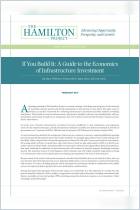Melden Sie sich bei getAbstract an, um die Zusammenfassung zu erhalten.

Melden Sie sich bei getAbstract an, um die Zusammenfassung zu erhalten.
Darwin Marcelo, Cledan Mandri-Perrott, Schuyler House and Jordan Schwartz
Prioritizing Infrastructure Investment
A Framework for Government Decision Making
World Bank, 2016
Was ist drin?
With too many infrastructure projects and not enough money, how do you decide which ones to fund?
Recommendation
Due to the huge amount of capital required for investments in infrastructure, governments need to prioritize projects. The World Bank’s Darwin Marcelo, Cledan Mandri-Perrott, Schuyler House and Jordan Schwartz offer an “Infrastructure Prioritization Framework” to help guide decisions. While this framework could be useful for cash-strapped governments that can’t engage in a more extensive analysis, it is, the authors admit, just a “stopgap approach”: While it doesn’t provide a conclusive list of projects for implementation, it does offer valuable data and decision criteria. getAbstract suggests this informative report to policy makers and managers interested in new investment evaluation techniques.
Summary
About the Authors
Darwin Marcelo, Cledan Mandri-Perrott, Schuyler House and Jordan Schwartz are infrastructure specialists with the World Bank.

























Comment on this summary